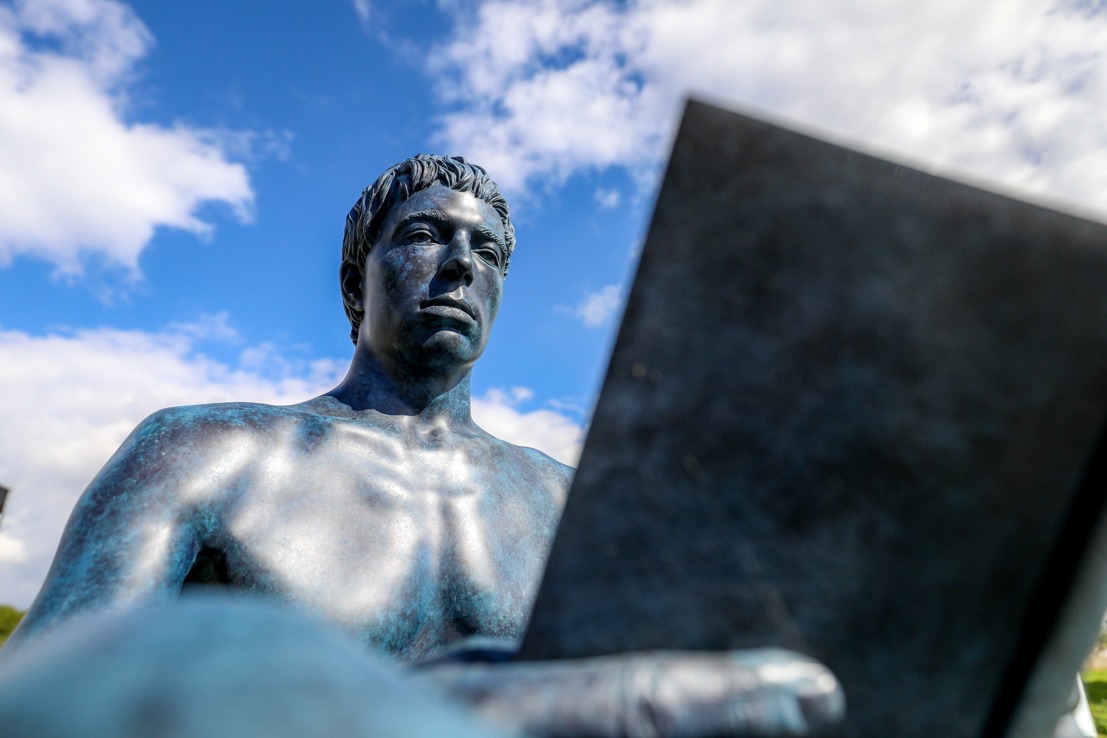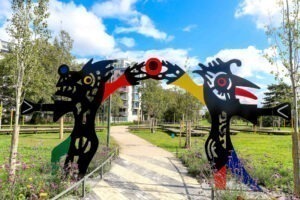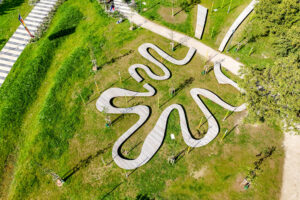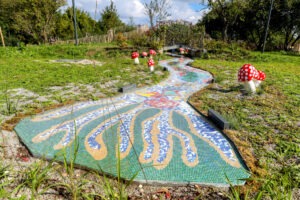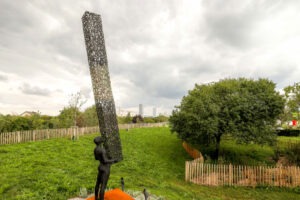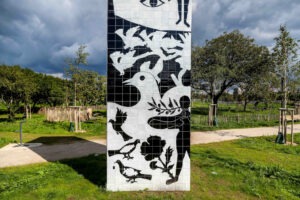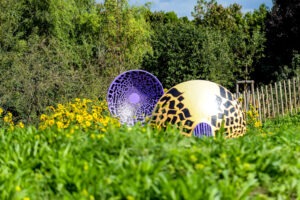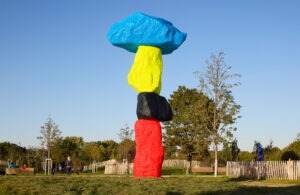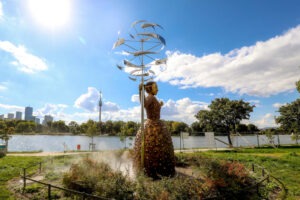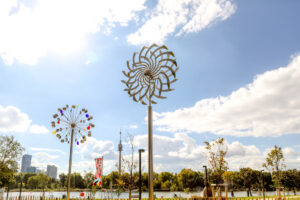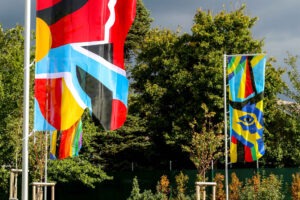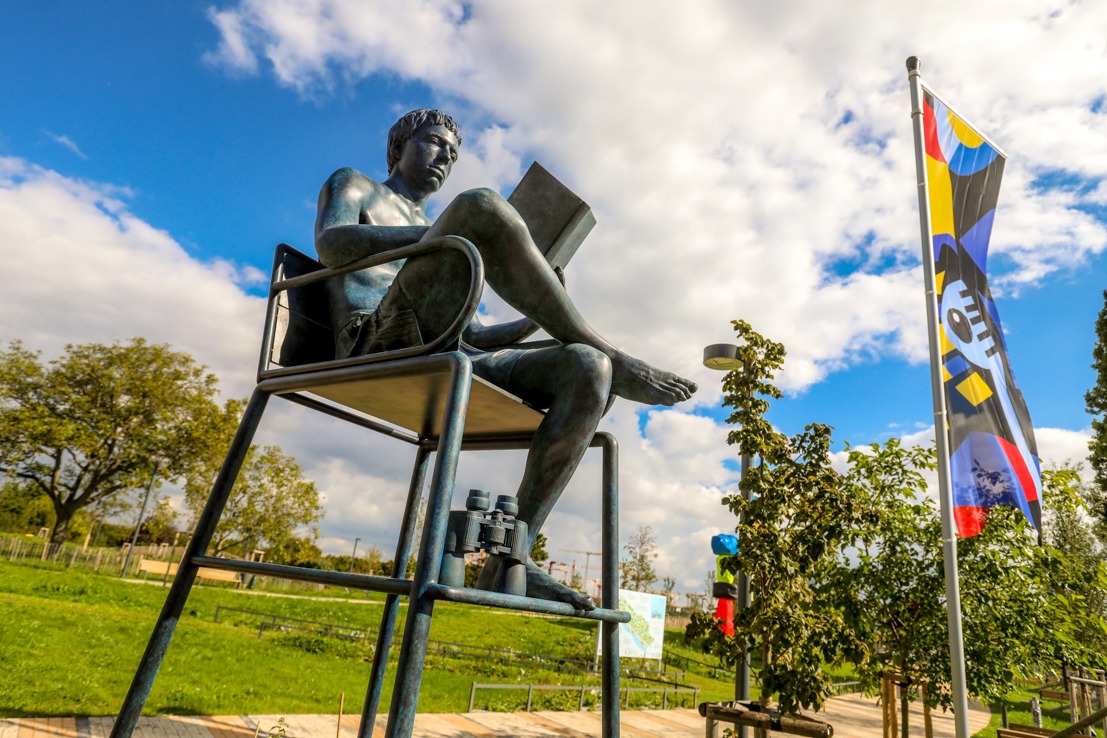
 The Guardian
The Guardian
The Guardian von Elmgreen & Dragset (2023) zeigt eine männliche Bronzefigur, die auf einem erhöhten Rettungsschwimmersessel sitzt und ein Buch liest, zu ihren Füßen liegt ein Fernglas. Das Künstlerduo, bekannt für seine figurativen Skulpturen, stellt Alltagssituationen dar – oft mit einem überraschenden Twist, der vielfältige Interpretationen erlaubt. Mit dem wiederkehrenden Motiv des Rettungsschwimmers stellt The Guardian die Erwartungen auf den Kopf: Die Figur ist nach innen gewandt, vertieft sich in ihr Buch, anstatt ihre Umgebung zu beobachten, und verschiebt damit den Fokus von professioneller Wachsamkeit zu persönlicher Introspektion. Ob die Figur als Hüter des gedruckten Wortes oder als Rettungsschwimmer, der seinen Pflichten nicht nachkommt, verstanden wird, bleibt den Betrachtenden überlassen – ein Markenzeichen von Elmgreen & Dragset’s rätselhafter, multi-narrativer Kunstpraxis.
Elmgreen & Dragset
Elmgreen & Dragset (Michael Elmgreen, 1961, Kopenhagen, Dänemark; Ingar Dragset, 1969, Trondheim, Norwegen) beschäftigen sich in ihrer künstlerischen Arbeit mit Fragen von Identität und Zugehörigkeit und untersuchen soziale, kulturelle sowie politische Strukturen. Ihr Interesse gilt dem Diskurs, der ermöglicht wird, wenn Objekte radikal re-kontextualisiert und traditionelle Wege der Kunstpräsentation infrage gestellt werden.
Die beiden Künstler leben in Berlin und arbeiten seit 1995 als Künstlerduo zusammen. Sie haben zahlreiche Einzelausstellungen in renommierten Institutionen weltweit präsentiert, darunter die Kunsthalle Zürich (2001), Tate Modern, London (2004), Serpentine Gallery, London (2006), Museo de Arte Contemporáneo de Castilla y León, Spanien (2009), ZKM – Zentrum für Kunst und Medien, Karlsruhe (2010), Museum Boijmans Van Beuningen, Rotterdam (2011), Victoria and Albert Museum, London (2013–2014), Leeum, Samsung Museum of Art, Seoul (2015), UCCA Center for Contemporary Art, Peking (2016), Tel Aviv Museum of Art, Israel (2016), Whitechapel Gallery, London (2018–2019), Nasher Sculpture Center, Dallas, Texas (2019–2020), Fondazione Prada, Mailand (2022) und Centre Pompidou-Metz, Frankreich (2023–2024). 2009 vertraten sie sowohl den Nordischen als auch den Dänischen Pavillon auf der 53. Biennale von Venedig.
Besondere Aufmerksamkeit haben ihre großformatigen Installationen im öffentlichen Raum erregt, darunter Short Cut (2003), eine Installation mit einem Fiat Uno und einem Wohnwagen, die scheinbar aus dem Boden wachsen; Prada Marfa (2005), eine täuschend echte Nachbildung einer Prada-Boutique an der US Route 90 in Valentine, Texas; und Van Gogh’s Ear (2016), ein riesiges, vertikales Schwimmbecken vor dem Rockefeller Center in New York City. Ihre Werke sind Teil bedeutender öffentlicher Sammlungen weltweit, darunter das ARKEN Museum of Contemporary Art, Ishøj, Dänemark; Art Production Fund, New York; Columbus Museum of Art, Ohio; Museo Jumex, Mexiko-Stadt; Hamburger Bahnhof – Museum für Gegenwart, Berlin; Kistefos Museet, Jevnaker, Norwegen; Leeum, Samsung Museum of Art, Seoul; Louisiana Museum of Modern Art, Humlebæk, Dänemark; Moderna Museet, Stockholm; Museum of Contemporary Art Chicago.
Credits
Pace Gallery, New York
 The Gurdian
The Gurdian
Elmgreen & Dragset’s The Guardian (2023) features a bronze-cast male figure seated in a lifeguard chair, reading a book, while a pair of binoculars rest at his feet. Known for their figurative sculptures, the artist duo depict everyday life situations but often with a twist that invites myriad interpretations. Revisiting the lifeguard motif, a recurring figure in their work, The Guardian upends expectations: the figure turns inward, absorbed in his book rather than surveying his surroundings, shifting the focus from professional vigilance to personal introspection. Whether the figure is a custodian of the printed word or a lifeguard shirking his duties is left for the viewer to decide, a hallmark of Elmgreen & Dragset’s enigmatic, narrative-rich practice.
Elmgreen & Dragset
Elmgreen & Dragset (Michael Elmgreen, b. 1961, Copenhagen, Denmark; Ingar Dragset, b. 1969, Trondheim, Norway) examine questions of identity and belonging and investigate social, cultural and political structures in their artistic practice. They are interested in the discourse that can ensue when objects are radically re-contextualized and traditional modes of representation of art are challenged.
Michael Elmgreen and Ingar Dragset are based in Berlin and have worked together as an artist duo since 1995. They have presented numerous solo exhibitions at prominent institutions worldwide including Kunsthalle Zürich (2001); Tate Modern, London (2004); Serpentine Gallery, London (2006); Museo de Arte Contemporáneo de Castilla y León, Spain (2009); ZKM – Museum of Contemporary Art, Karlsruhe, Germany (2010); Museum Boijmans van Beuningen, Rotterdam (2011); Victoria and Albert Museum, London (2013-14); Leeum, Samsung Museum of Art, Seoul (2015); UCCA Center for Contemporary Art, Beijing (2016); Tel Aviv Museum of Art, Israel (2016); Whitechapel Art Gallery, London (2018-19); Nasher Sculpture Center, Dallas, Texas (2019-2020); Fondazione Prada, Milan (2022); and Centre Pompidou-Metz, France (2023-24). In 2009, they represented both the Nordic and the Danish Pavilions at the 53rd Venice Biennale.
The duo is renowned for large-scale public installations including Short Cut (2003), an installation consisting of a Fiat Uno and a camper trailer, which appear to emerge from the ground; Prada Marfa (2005), a full-scale replica of a Prada boutique installed along U.S. Route 90 in Valentine, Texas; and Van Gogh’s Ear (2016), a gigantic vertical swimming pool placed in front of Rockefeller Center in New York City. Their work is held in public collections worldwide, including ARKEN Museum of Contemporary Art, Ishøj, Denmark; Art Production Fund, New York; Columbus Museum of Art, Ohio; Museo Jumex, Mexico City; Hamburger Bahnhof, Contemporary Art National Gallery, Berlin; Kistefos Museum, Jevnaker, Norway; Leeum, Samsung Museum of Art, Seoul; Louisiana Museum of Modern Art, Humlebæk, Denmark; Moderna Museet, Stockholm; and the Museum of Contemporary Art Chicago, among others.
Credits
Pace Gallery, New York
